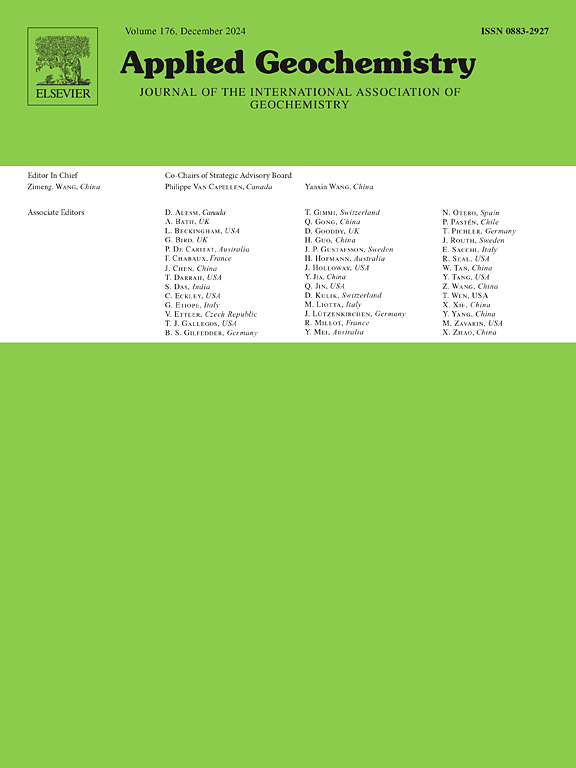A 19-level fixed-value method to classify the Mo concentrations in Jianshui area of Yunnan province, China
IF 3.1
3区 地球科学
Q1 GEOCHEMISTRY & GEOPHYSICS
引用次数: 0
Abstract
Geochemical map as a kind of hierarchical color contour map is a basic map in the geochemical survey and exploration. Traditional methods on geochemical mapping are relative and rely on the amount of data which cannot be compared among elements. The fixed-value method presented recently on geochemical mapping can overcome the faults of the traditional methods. This study introduces a novel fixed-value method for Mo classification, addressing gaps in existing approaches. Based on 18 fixed-values, Mo concentrations can be divided into 19 levels, which are further categorized into six types: low background on the level of 1st to 5th in blue tone, high background on the level of 6th to 9th in yellow tone, low anomaly on the level of 10th to 12th in pink tone, high anomaly on the level of 13th to 15th in red tone, mineralization as an associate economic metal on the level of 16th to 18th in gray tone, and mineralization as the main economic metal in rocks on the level of 19th in black color. The Mo 19-level fixed-value method was applied to elemental data of samples from areal stream sediments, a weathering profile, and surface outcropped rocks in the Jianshui area in Yunnan province of China. For the areal data, the result of the Mo geochemical map indicates that the Mo concentrations in the Jianshui area are mainly belong to the high background type in yellow tone without mineralized type which is consistent with the fact that no Mo deposits have been discovered in this area. For the data from the weathering profile and surface rocks, the Mo concentrations can also be divided into different levels on this method. Besides, the results of geochemical maps of Sn and Li on their 19-level fixed-value method in the Jianshui area are consistent with their geological facts that deposits of Sn have been discovered. Therefore, the new method is an objective method which can facilitate not only the evaluation of the elemental concentrations on their classified levels but also the comparison among different elements.
求助全文
约1分钟内获得全文
求助全文
来源期刊

Applied Geochemistry
地学-地球化学与地球物理
CiteScore
6.10
自引率
8.80%
发文量
272
审稿时长
65 days
期刊介绍:
Applied Geochemistry is an international journal devoted to publication of original research papers, rapid research communications and selected review papers in geochemistry and urban geochemistry which have some practical application to an aspect of human endeavour, such as the preservation of the environment, health, waste disposal and the search for resources. Papers on applications of inorganic, organic and isotope geochemistry and geochemical processes are therefore welcome provided they meet the main criterion. Spatial and temporal monitoring case studies are only of interest to our international readership if they present new ideas of broad application.
Topics covered include: (1) Environmental geochemistry (including natural and anthropogenic aspects, and protection and remediation strategies); (2) Hydrogeochemistry (surface and groundwater); (3) Medical (urban) geochemistry; (4) The search for energy resources (in particular unconventional oil and gas or emerging metal resources); (5) Energy exploitation (in particular geothermal energy and CCS); (6) Upgrading of energy and mineral resources where there is a direct geochemical application; and (7) Waste disposal, including nuclear waste disposal.
 求助内容:
求助内容: 应助结果提醒方式:
应助结果提醒方式:


